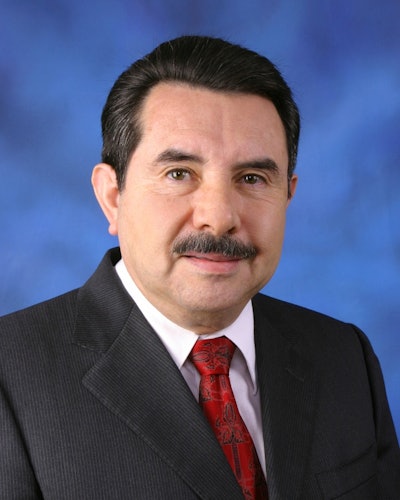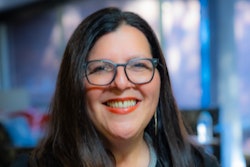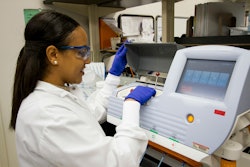Across the U.S., the Latinx population is booming.
Eighteen percent (18%) of the population identifies as Latinx, according to the 2020 census. Before the pandemic, the largest share of enrollment growth belonged to the Latinx population.
In fact, Hispanic Serving Institutions (HSIs), colleges or universities with a student population that is at least 25% Latinx, grew by 94% between 2010 and 2020, according to Excelencia! in Education. Excelencia!’ president and CEO Dr. Deborah Santiago, and other leading experts, believe the number of HSIs will continue to grow.
HSIs receive federal funding meant to improve Latinx education. But truly serving the Latinx student population isn’t as simple as applying for HSI qualification. Experts say institutions need to reach out to Latinx communities, embrace family involvement, employ Latinx staff and faculty in leadership positions, and work to ensure that Latinx students feel comfortable on campus. Doing this is not just an equity imperative, they say, but crucial to the survival of the American economy.
 Dr. Antonio R. Flores
Dr. Antonio R. Flores
“More than half of all the new workers joining our labor force nationwide everyday are Hispanic,” said Dr. Antonio R. Flores, president and CEO of the Hispanic Association of Colleges and Universities (HACU). HACU’s leadership led the push in 1992 that resulted in Congress officially recognizing HSIs. “[Congress] needs to invest in those institutions that are graduating by far the largest groups of new workers joining the American labor force.”
“If you don’t have a highly educated workforce, eventually, you’ll get behind other countries," Flores said. "Your economy is not growing as fast in different ways. It’s investing in America’s future, really, to invest in an HSI."
Federal funds alone won’t guarantee a Latinx student’s success either, said Dr. Claudia Garcia-Louis, an assistant professor of educational leadership and policy studies at the University of Texas: San Antonio (UTSA) and an expert on Latinx identity. UTSA has been an HSI since its inception in 1969, due to the high population of Latinx people in south Texas.
"Educational leaders need to ask the local community as well as students what it means to serve them," said Garcia-Louis. “I’ve found that administrators, even Latinx folks, feel that we know what’s best, but we don’t ask what’s best."
Garcia-Louis said that institutions trying to connect with their community will fail if they simply bring in big names to offer lectures to the community at large.
“If you [bring in] a community organizer doing that work, now you’re recognizing the community—you’re addressing Hispanic excellence, and you’re breaking down barriers," she said. "The community knows these folks,” she said.
Inviting prominent members of the community onto campus, said Garcia-Louis, will make the institution feel accessible, even to those without degrees.
 Dr. Claudia Garcia-Louis
Dr. Claudia Garcia-Louis
Dr. Deborah Santiago agrees.
“The effort to know who’s in [an institution’s] service area, their strengths, then using that information to recruit not just students but families and communities, that makes for sustaining enrollment,” she said.
“It all starts with knowing the profile of your student, knowing who you serve and who you don’t and who you intend to serve. Those three questions are core to being intentional,” she added.
If students on campus feel accomplished, said Santiago, that will create a consistent enrollment base.
“Make sure part of your admissions team or counselors are people who look like the community or are in the community and have positions or trust,” she said.
The community and family connection are vital to Latinx students, said Santiago, because “we’re more likely to be the first to go to college in our families. So much focus in on the students, but for Latinos, its disproportionately about family decision.”
Colorado State University: Pueblo, has been an HSI since 2002. In 2008, HACU recognized the school as “one of the top HSIs in the nation.” Dr. Chrissy Holliday vice president of enrollment management, communications, and student affairs said achieving that status wasn’t an accident. It was accomplished through intentional effort, and a constant surveying of their students for areas that could improve.
There are two separate orientations at CSU: Pueblo, one for the new students and another for their families. Parents, grandparents, spouses and siblings all come and meet with Holliday, the dean of students, and financial aid representatives. There is a glossary of commonly used but lesser-known higher education vocabulary on the CSU: Pueblo website, and all families are given information about who to contact if they have questions. They’re also offered a guidebook on the college experience, with helpful hints about what times of the year are most stressful to students.
“We try to figure out, what are the issues [the families are] more concerned about,” said Holliday. “We see it as a handoff, that they are trusting us to take care of our students. We assure them that while their student is here, they have a support system through us.”
CSU: Pueblo is also deeply entrenched in its area high schools. Just a few years ago, “track centers” were established in four area high schools with advisors and peer-mentors there to help any high schooler with questions.
Saint Xavier University in Chicago, Illinois, is also embedded in its local high schools. They have been an HSI since 2017, by virtue not only of their location on the south side of Chicago but also their school’s mission. As of Spring 2021, 44% of the student population at SXU identified as Latinx, and 70% of their students are first-generation.
“Our university was founded by the Sisters of Mercy in 1846 to help serve the educational and medical needs of the Chicago immigrant community,” said SXU president Dr. Laurie M. Joyner. “Our culture is a culture of care.”
 Dr. Deborah Santiago
Dr. Deborah Santiago
Being an HSI, said Joyner, is about committing to equity and fairness, not just enrolling the right number of students to qualify for HSI funding.
“You have to make sure you’re centering their voices, the voices of their families, and making sure your institution is serving them well,” said Joyner. “As we’ve come to find out, it’s more complicated, a long-term process, not a destination you get to. It’s a process of continuing to deepen your commitment.”
Serving minoritized students, she said, requires disaggregation of data.
“When you start breaking out your retention, graduation rate, and success rates by cultural and racial background, you’ll see gaps. That’s just the way it is in this country,” said Joyner. “The challenge is, how do we close those gaps? That’s the purpose of those [HSI] dollars.”
Since she became president in 2017, Joyner converted 45% of SXU’s budget to supporting financial aid, and their retention rate from first to second year is the strongest it’s been in a decade. They’ve tripled their endowment and are in the final steps of hiring a chief diversity officer. Joyner knows they have come a long way, but said they still have a long way to go, especially when it comes to leadership of color.
“We always aim for it. It’s critically important. But it’s tough with tenure, people tend not to turn over. Your student population is changing more quickly than you’re able to change your staff,” said Joyner. And, when their new chief diversity officer is hired, there will likely be more assessments and more changes to come.
“We want to make sure all our students feel like they belong,” she said. “We want to measure how our culture is really evolving, to make sure it’s fully inclusive.”
Liann Herder can be reached at [email protected].



















